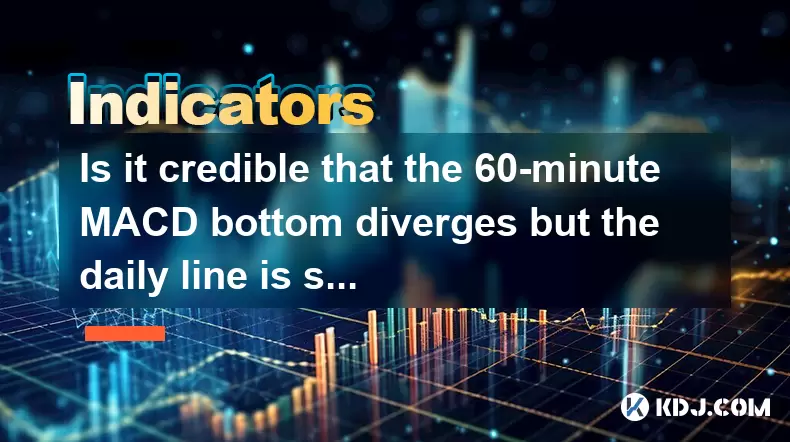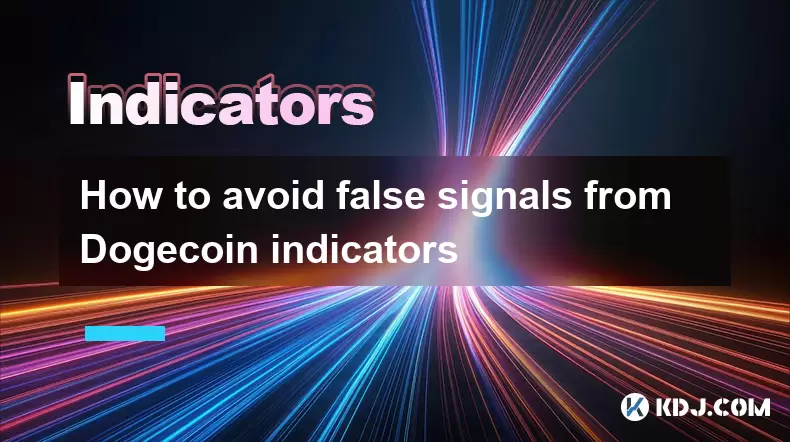-
 Bitcoin
Bitcoin $108,250.0992
0.11% -
 Ethereum
Ethereum $2,515.9404
0.03% -
 Tether USDt
Tether USDt $1.0003
0.00% -
 XRP
XRP $2.2166
-0.19% -
 BNB
BNB $656.5904
0.29% -
 Solana
Solana $147.4122
-0.58% -
 USDC
USDC $1.0000
-0.01% -
 TRON
TRON $0.2830
0.06% -
 Dogecoin
Dogecoin $0.1641
0.27% -
 Cardano
Cardano $0.5739
-0.19% -
 Hyperliquid
Hyperliquid $39.1463
-0.11% -
 Sui
Sui $2.8882
-0.02% -
 Bitcoin Cash
Bitcoin Cash $487.6428
0.31% -
 Chainlink
Chainlink $13.2097
0.07% -
 UNUS SED LEO
UNUS SED LEO $9.0308
0.10% -
 Avalanche
Avalanche $17.8608
0.13% -
 Stellar
Stellar $0.2379
-0.06% -
 Toncoin
Toncoin $2.7400
-0.39% -
 Shiba Inu
Shiba Inu $0.0...01144
-0.36% -
 Litecoin
Litecoin $87.5467
0.66% -
 Hedera
Hedera $0.1538
0.22% -
 Monero
Monero $315.5479
0.36% -
 Dai
Dai $1.0000
0.00% -
 Polkadot
Polkadot $3.3523
-0.71% -
 Ethena USDe
Ethena USDe $1.0003
0.01% -
 Bitget Token
Bitget Token $4.3960
-1.03% -
 Uniswap
Uniswap $7.2663
4.19% -
 Aave
Aave $272.8619
2.04% -
 Pepe
Pepe $0.0...09676
-0.18% -
 Pi
Pi $0.4586
-2.87%
Is it credible that the 60-minute MACD bottom diverges but the daily line is still falling?
A 60-minute MACD bottom divergence suggests weakening bearish momentum, but the daily chart's continued decline raises doubts about a sustainable reversal.
Jul 02, 2025 at 12:15 pm

Understanding MACD and Its Role in Technical Analysis
The Moving Average Convergence Divergence (MACD) is one of the most widely used technical indicators in cryptocurrency trading. It helps traders identify potential trend reversals, momentum shifts, and entry or exit points. The MACD line is calculated by subtracting the 26-period Exponential Moving Average (EMA) from the 12-period EMA. A signal line, usually a 9-period EMA of the MACD line, is then plotted alongside it. Traders often look for crossovers, divergences, and histogram changes to make informed decisions.
In the context of the question, a 60-minute MACD bottom divergence implies that while the price continues to make lower lows, the MACD line starts forming higher lows. This could suggest weakening bearish momentum and a possible reversal. However, the daily chart's continued downward movement raises concerns about the reliability of this bullish signal.
What Is a Bottom Divergence in MACD?
A bottom divergence, also known as a bullish divergence, occurs when the price makes a new low but the MACD does not confirm this with a corresponding low. Instead, the MACD forms a higher low, indicating that the selling pressure may be decreasing.
For example:
- Price drops to $30,000.
- MACD line hits -0.5.
- Later, price falls further to $29,000.
- But the MACD line only reaches -0.4.
This suggests that although the price is going down, the underlying momentum isn't matching the move, potentially signaling a near-term bottom. On the 60-minute chart, such divergences can appear frequently due to short-term volatility in crypto markets.
Why Does the Daily Line Still Fall Despite a Bullish MACD Signal?
The daily chart reflects long-term trends and broader market sentiment. Even if a short-term indicator like the 60-minute MACD shows a bullish divergence, the daily trend might still be bearish due to several reasons:
- Stronger Resistance Levels: The market may be encountering significant resistance at key psychological or historical levels, preventing a sustainable rally.
- Volume Deficit: If buying volume doesn't increase during the divergence, it weakens the likelihood of a strong reversal.
- Macro Factors: Events like regulatory news, macroeconomic data, or global financial market movements can influence the daily trend independently of short-term technical signals.
Therefore, a bullish signal on a shorter time frame doesn’t necessarily override the dominant trend visible on a longer time frame like the daily chart.
How Can Traders Interpret Conflicting Signals Between Time Frames?
When faced with a situation where the 60-minute MACD suggests a potential reversal but the daily chart remains bearish, traders should consider the following steps:
- Align with the Dominant Trend: In most cases, especially in trending markets, it’s safer to trade in the direction of the daily trend unless there’s clear evidence of a reversal.
- Use Additional Confirmations: Look for other signs of a reversal on the daily chart, such as a break above a key moving average or a bullish candlestick pattern.
- Monitor Volume: An uptick in volume during the divergence period can strengthen the case for a reversal.
- Wait for a Breakout: Instead of entering immediately on the divergence, wait for a confirmed breakout above a recent swing high or resistance level.
- Set Tight Stop-Losses: If entering a counter-trend trade based on a short-term signal, always protect capital with a well-defined stop-loss.
These strategies help manage risk and avoid false positives that are common in volatile crypto markets.
Can a Short-Term Divergence Be Ignored in Favor of Long-Term Trends?
Yes, it's entirely reasonable to ignore short-term divergences when the long-term trend is clearly defined. In fact, doing so can prevent premature entries and reduce exposure to whipsaws.
For instance:
- If Bitcoin has been in a downtrend for weeks and the daily MACD is still sloping downward, a single 60-minute bullish divergence may not carry enough weight to justify a position change.
- Institutional investors and algorithmic systems often focus more on daily and weekly charts, which means their actions may overshadow the impact of intraday signals.
Traders must assess whether the divergence aligns with any broader market developments or if it's simply noise within a larger downtrend.
FAQ: Frequently Asked Questions
Q1: Can I use MACD divergence alone to make trading decisions?
No, MACD divergence should not be used in isolation. Always combine it with other tools such as support/resistance levels, volume analysis, and trend lines to improve accuracy.
Q2: How reliable is MACD in highly volatile crypto markets?
While MACD is a useful tool, its effectiveness can diminish in extremely volatile conditions. False signals are more common, so additional filters like Bollinger Bands or RSI are recommended.
Q3: What time frame should I prioritize when using MACD?
It depends on your trading strategy. Day traders may rely heavily on the 1-hour or 15-minute charts, while swing traders should prioritize daily and weekly charts for confirmation.
Q4: Should I always trust a bullish divergence on a shorter time frame?
Not necessarily. Always evaluate the alignment with higher time frames and ensure that other confirming factors are present before acting on a divergence signal.
Disclaimer:info@kdj.com
The information provided is not trading advice. kdj.com does not assume any responsibility for any investments made based on the information provided in this article. Cryptocurrencies are highly volatile and it is highly recommended that you invest with caution after thorough research!
If you believe that the content used on this website infringes your copyright, please contact us immediately (info@kdj.com) and we will delete it promptly.
- XRP's Upside Potential: Analysts Bullish Despite Accessibility Concerns
- 2025-07-06 10:30:13
- Dubai Hotelier, Crypto Scam, and an Arrest in India: A Tangled Web
- 2025-07-06 10:30:13
- Bitcoin's Calm Before the Storm: ETF Inflows Surge Amidst Low Volatility
- 2025-07-06 10:50:13
- Crypto Capital Inflows: Why Qubetics, Ethereum, and SUI are Investment Coins to Watch
- 2025-07-06 10:50:13
- Bitcoin, Crypto, and Polymarket: Decoding the Crystal Ball
- 2025-07-06 11:15:22
- XRP Price Prediction: Can XRP Break the Weekly Downtrend?
- 2025-07-06 11:00:13
Related knowledge

How to spot manipulation on the Dogecoin chart
Jul 06,2025 at 12:35pm
Understanding the Basics of Chart ManipulationChart manipulation in the cryptocurrency space, particularly with Dogecoin, refers to artificial price movements caused by coordinated trading activities rather than genuine market demand. These manipulations are often executed by large holders (commonly known as whales) or organized groups aiming to mislead...

What is the significance of a Dogecoin engulfing candle pattern
Jul 06,2025 at 06:36am
Understanding the Engulfing Candle Pattern in CryptocurrencyThe engulfing candle pattern is a significant technical analysis tool used by traders to identify potential trend reversals in financial markets, including cryptocurrencies like Dogecoin. This pattern typically consists of two candles: the first one is relatively small and indicates the current...

Dogecoin monthly chart analysis for long term investors
Jul 06,2025 at 10:08am
Understanding the Dogecoin Monthly ChartFor long-term investors, analyzing the monthly chart of Dogecoin (DOGE) provides a macro view of its price behavior over extended periods. The monthly chart captures major trends, key resistance and support levels, and potential reversal zones that are crucial for strategic investment planning. Unlike daily or hou...

How to manage risk using ATR on Dogecoin
Jul 06,2025 at 02:35am
Understanding ATR in Cryptocurrency TradingThe Average True Range (ATR) is a technical indicator used to measure market volatility. Originally developed for commodities, it has found widespread use in cryptocurrency trading due to the high volatility inherent in digital assets like Dogecoin (DOGE). The ATR calculates the average range of price movement ...

How to avoid false signals from Dogecoin indicators
Jul 06,2025 at 06:49am
Understanding Dogecoin Indicators and Their LimitationsDogecoin indicators are tools used by traders to analyze price movements and make informed decisions. These include moving averages, Relative Strength Index (RSI), MACD, and volume-based metrics. However, these tools can sometimes generate false signals, especially in highly volatile markets like Do...

Dogecoin Donchian Channels strategy
Jul 06,2025 at 02:43am
What Are Donchian Channels?Donchian Channels are a technical analysis tool used to identify potential breakouts, trends, and volatility in financial markets. They consist of three lines: the upper band, which marks the highest high over a specific period; the lower band, which reflects the lowest low over the same period; and the middle line, typically ...

How to spot manipulation on the Dogecoin chart
Jul 06,2025 at 12:35pm
Understanding the Basics of Chart ManipulationChart manipulation in the cryptocurrency space, particularly with Dogecoin, refers to artificial price movements caused by coordinated trading activities rather than genuine market demand. These manipulations are often executed by large holders (commonly known as whales) or organized groups aiming to mislead...

What is the significance of a Dogecoin engulfing candle pattern
Jul 06,2025 at 06:36am
Understanding the Engulfing Candle Pattern in CryptocurrencyThe engulfing candle pattern is a significant technical analysis tool used by traders to identify potential trend reversals in financial markets, including cryptocurrencies like Dogecoin. This pattern typically consists of two candles: the first one is relatively small and indicates the current...

Dogecoin monthly chart analysis for long term investors
Jul 06,2025 at 10:08am
Understanding the Dogecoin Monthly ChartFor long-term investors, analyzing the monthly chart of Dogecoin (DOGE) provides a macro view of its price behavior over extended periods. The monthly chart captures major trends, key resistance and support levels, and potential reversal zones that are crucial for strategic investment planning. Unlike daily or hou...

How to manage risk using ATR on Dogecoin
Jul 06,2025 at 02:35am
Understanding ATR in Cryptocurrency TradingThe Average True Range (ATR) is a technical indicator used to measure market volatility. Originally developed for commodities, it has found widespread use in cryptocurrency trading due to the high volatility inherent in digital assets like Dogecoin (DOGE). The ATR calculates the average range of price movement ...

How to avoid false signals from Dogecoin indicators
Jul 06,2025 at 06:49am
Understanding Dogecoin Indicators and Their LimitationsDogecoin indicators are tools used by traders to analyze price movements and make informed decisions. These include moving averages, Relative Strength Index (RSI), MACD, and volume-based metrics. However, these tools can sometimes generate false signals, especially in highly volatile markets like Do...

Dogecoin Donchian Channels strategy
Jul 06,2025 at 02:43am
What Are Donchian Channels?Donchian Channels are a technical analysis tool used to identify potential breakouts, trends, and volatility in financial markets. They consist of three lines: the upper band, which marks the highest high over a specific period; the lower band, which reflects the lowest low over the same period; and the middle line, typically ...
See all articles

























































































